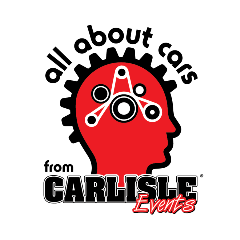
Big Horse Mustangs: When the Pony Cars Were Clydesdales
There was a time when “Pony Cars” ruled the automotive marketplace, and for a few years, Ford’s “Pony” became a Clydesdale with greater size, heft and power.
The Ford Mustang revolutionized the auto industry in 1964 when it hit the marketplace. Currently in its 6th Generation, the Lead Pony of all “Pony Cars” is Ford’s fifth-best-selling badge. Lee Iacocca, vice president and general manager of Ford in the early 1960s, sought to build and command America’s need for speed and style among young car driver-owners by developing a sporty youth-market car based on the compact Falcon. Developed in record time on a shoe-string budget, Ford introduced the 1965 Mustang at the World's Fair on April 17, 1964 and it was an instant hit. Ford planned for 100,000 first-year sales, but dealers sold 22,000 on the first day. From the get-go the Ford Mustang initiated a new genre of automobiles, known as “pony cars,” though horsepower assets didn’t quite make the muscle car scene.
Originally developed as a highly styled line of sporty coupes and convertibles derived from existing model lines, Mustang was distinguished by “long hood, short deck” proportions. Its immediate success inspired competition from its sibling badge – Mercury with its Cougar, as well as from Chevrolet, Pontiac, AMC, Dodge and Chrysler, and impacted design cues from Toyota.
Named for the World War II P-51 Mustang fighter plane, though Ford chief Lee Iacocca took it as a wild horse “Mustang,” other names under consideration were Cougar, Torino, Allegro and Avventura.
Introduced as a 1964 ½ Ford Mustang, the original engine lineup consisted of a 101-hp 170-c.i. straight-six, 4.3-liter V-8, and the original mid-size engine was 260 c.i. (4.3 liters) V8’s 164 horses, and was replaced by the legendary 289-c.i. V-8 (4.7 liters) with 210 hp and up to 271 horsepower. For late 1965, the six was enlarged to 200 c.i. (3.3 liters) and 120hp, and the 260 was replaced by the 289 with a two-barrel carburetor and up to 271 horses. The Mustang galloped into 1966 with only minor changes, and on March 1 of that year, Ford built the millionth Mustang.
In 1967, Mustang grew in length, width, and weight, primarily to allow the installation of a big-block engine. The 390-c.i. (6.4L) V-8 produced 335 hp, displacing the 289 as the top performer. Interior and exterior trim was revised, and a new 302-c.i. (4.9L) V-8 replaced the higher-horsepower 289s. For drag racing, Ford offered a 428-c.i. (7.0L) Cobra Jet V-8 rated at 335 hp and 440 lb-ft of torque.
By 1969, Mustang was even larger -- 3.8-inches longer and half an inch wider, with no change in the 108-inch wheelbase. Ford dropped the 289 and added a new 351-c.i. (5.8L) V-8 with 250 or 290 hp. New models included the Mach 1 and the Boss models. The Boss 302 was built to meet Trans-Am racing production requirements, while the Boss 429 put the 375-hp, 429-c.i. (7.0L) engine into street use as required by NASCAR rules. But Mustang grew less feisty in 1970, with a less-aggressive restyling.
That brings us to 50 years ago and the 1971 Mustangs, in which horses stampeded. In 1971, Mustang grew in size, weight (some models over 3500 lbs. – more than 1000 lbs heavier than in the 1964 launch. A new buttressed rear window gave the sedan a distinctly different profile than earlier Mustangs. Due to stringent emission rules, Muscle Car sales in America dropped, but Mustang went to market with an enlarged V6 to 250 c.i. (4.1L), the 351 and the 429, which was eliminated by 1972. However, from 1971 to 1973, Ford made a Clydesdale out of their once athletic pony car with additions in size and power.
Introduced in September 1970, the 1971 Mustang was green-lighted by Ford's new president, Semon “Bunkie” Knudsen. The revised model grew in size, gaining 3 inches in width in order to accommodate Ford's big block 429 cu in without need for an extensive suspension redesign.
As before there were three body styles offered: Hardtop (available in base or Grande trim), SportsRoof (available in base or Mach 1 trim), and convertible (no specific trim packages available). Available engines were the Thriftpower I6 250 c.i. (4.1L), the Windsor V8 302 c.i. (4.9L), the Cleveland 351 c.i. V8 (5.8L) and the Cobra Jet and Super Cobra Jet 429 c.i. (7.0L) V8s.
Powerwise, in 1971, the best power figures in the group, the 250 put out 145bhp and 232 lb-ft of torque; the 302 was rated at 210 bhp and 296 lb-ft.; the 351 delivered from 240 bhp and 350 lb-ft. to 330 bhp and 370 lb-ft. depending on code and configuration; and the 429 went as high as 375 bhp and 475 lb-ft.
Among the most notable Big Horse Mustangs were:
1971 Ford Mustang Boss 351
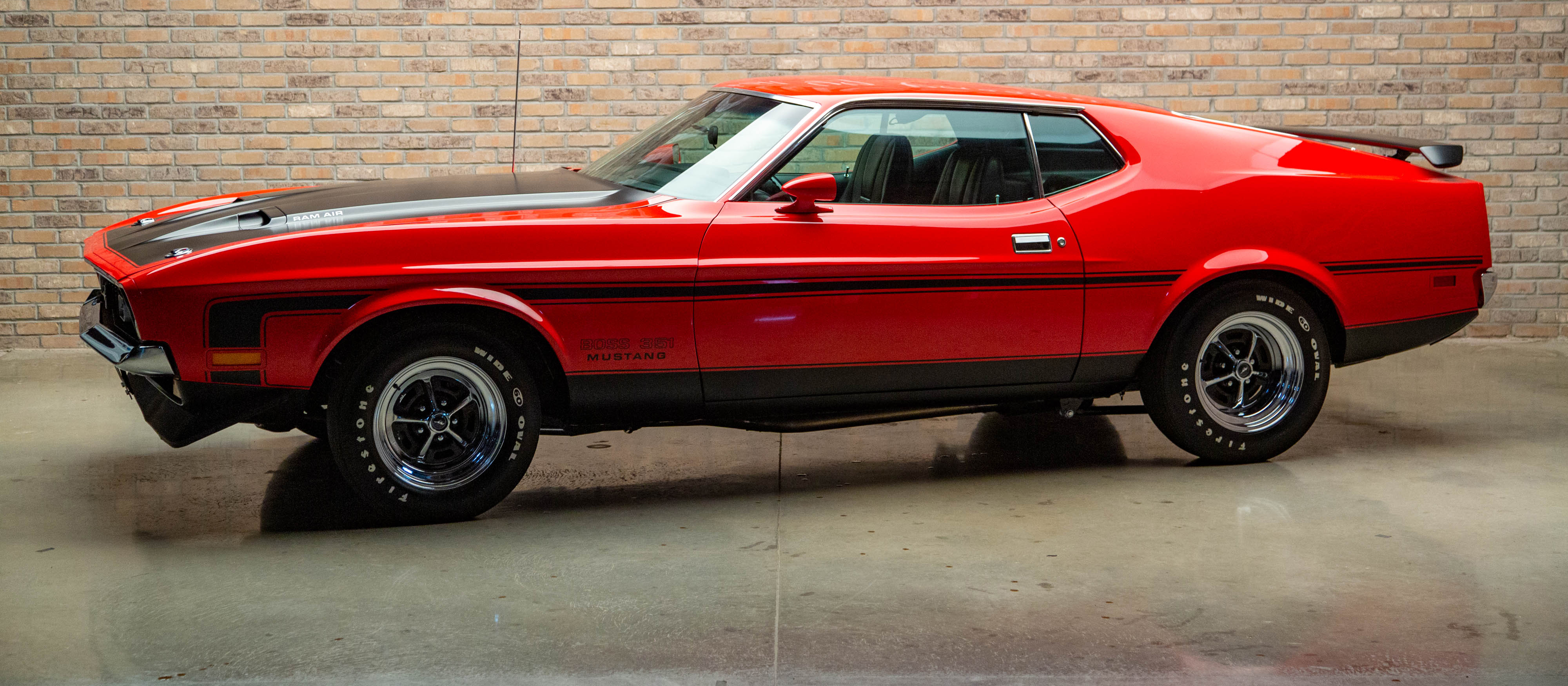
Packing a high-output version of the 351 Cleveland V8 under its broad, tapered hood, the Ford Mustang Boss 351 was one of Fords last true muscle cars. Only 1,806 were built in 1971, their lone year of production, and they remain among the hottest performers in the world of small-block Fords. They were designed with twin, functional “NACA” hood ducts, Mach 1 honeycomb grille, lower body paint treatment, bodyside stripes and 351 decals.
1971-1973 Ford Mustang Mach 1
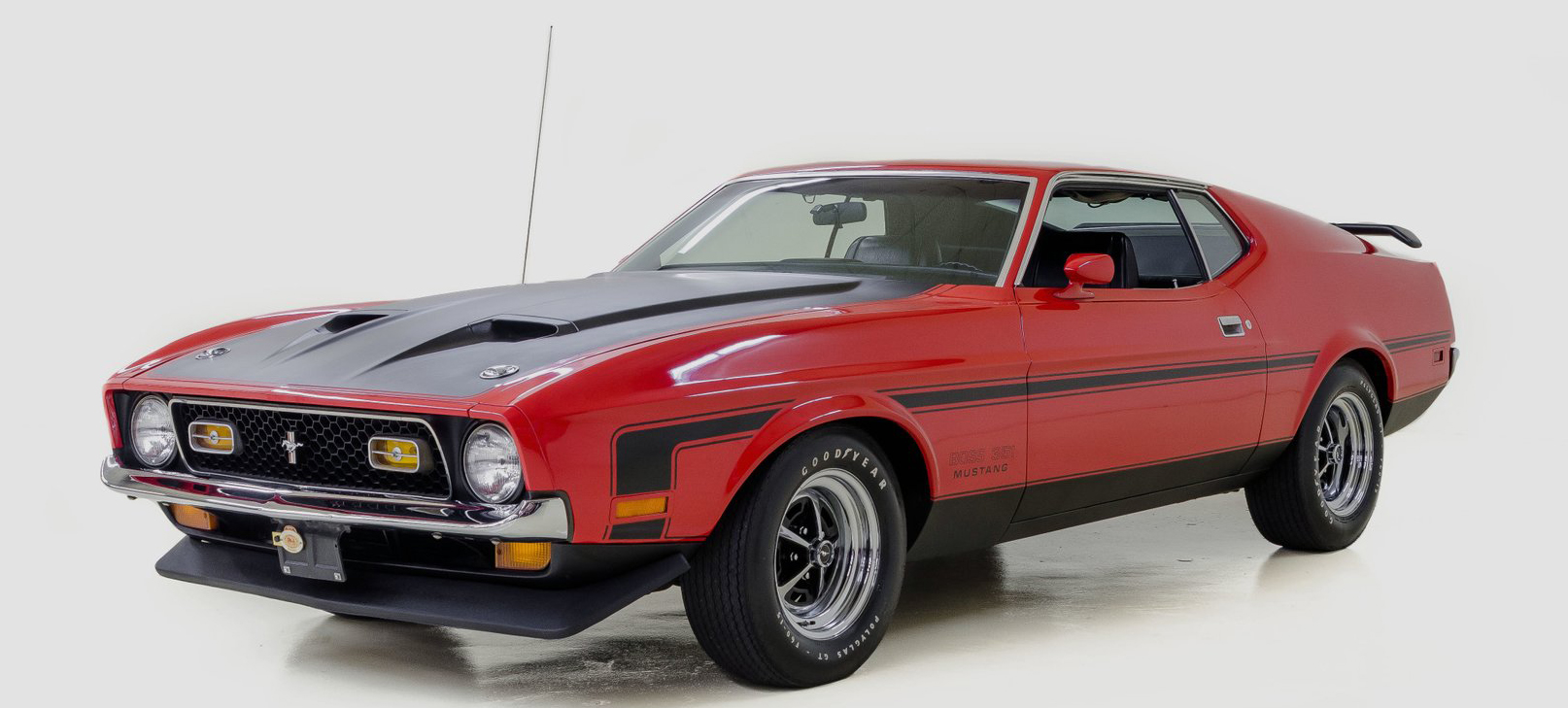
The Mach 1 returned to the line-up with a sleek fastback profile, and it was powered by everything from the standard 210-hp 302 two-barrel to the 240-hp 351 Cleveland two-barrel and 285-hp four-barrel engines, to the a 370-hp 429 CJ (Cobra Jet), 429 CJ-R (Ram Air), and a 375-hp 429 SCJ (Super Cobra Jet, when the Drag Pak was ordered). Its exterior featured a honeycomb-pattern grille, closed “NACA-type” hood scoops, honeycomb-pattern rear panel appliqué, pop-open gas cap, and "Mach 1" fender decals.
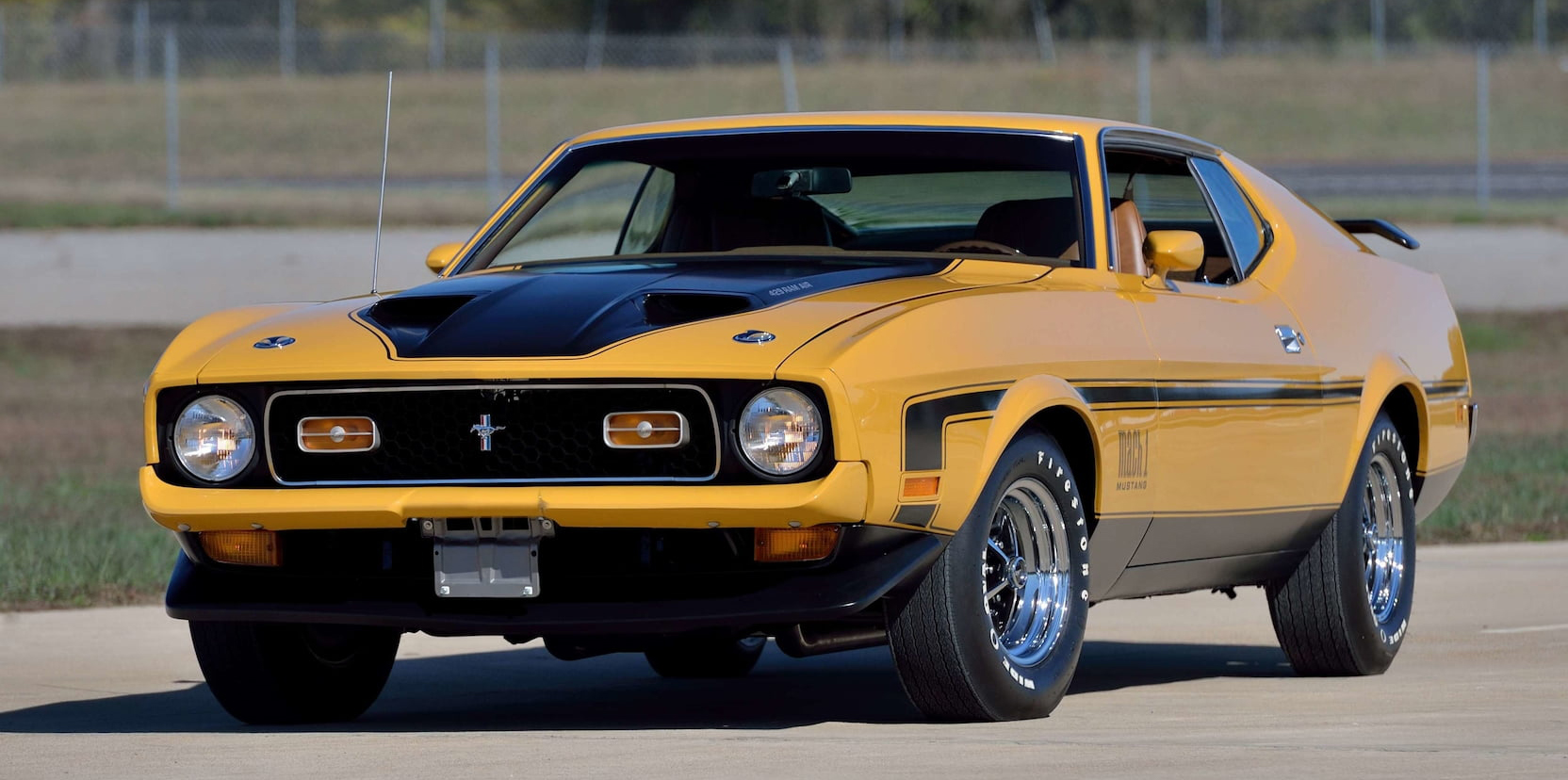
The 50th birthday of Mustang’s Big-Horse Clydesdales from 1971-1973 will be celebrated and the Ponies will be displayed on the Showfield and in Building T at this year’s Carlisle Ford Nationals on the Carlisle (PA) Fairgrounds, June 4-6. These powerful street beasts were some of the biggest, heaviest and most “styled” Mustangs ever selling around 410,000 over their three years. The Carlisle Ford Nationals features more than 3200 Ford, Lincoln, Mercury and Euro Fords. Ford Cars, Trucks and performance products will be on-site with offerings ranging from installations to special displays. Cars, parts, tools, memorabilia, collectibles and more will be for sale in the world's largest Ford Automotive Flea Market, as well as the latest and greatest products within the Manufacturers Midway.
> Visit www.CarlisleEvents.com for more on the automotive hobby.
Mike Blake, former editor of KIT CAR magazine, joined Carlisle Events as senior automotive journalist in 2004. He's been a "car guy" since the 1960s and has been writing professionally for about 30 years. </I>
The Ford Mustang revolutionized the auto industry in 1964 when it hit the marketplace. Currently in its 6th Generation, the Lead Pony of all “Pony Cars” is Ford’s fifth-best-selling badge. Lee Iacocca, vice president and general manager of Ford in the early 1960s, sought to build and command America’s need for speed and style among young car driver-owners by developing a sporty youth-market car based on the compact Falcon. Developed in record time on a shoe-string budget, Ford introduced the 1965 Mustang at the World's Fair on April 17, 1964 and it was an instant hit. Ford planned for 100,000 first-year sales, but dealers sold 22,000 on the first day. From the get-go the Ford Mustang initiated a new genre of automobiles, known as “pony cars,” though horsepower assets didn’t quite make the muscle car scene.
Originally developed as a highly styled line of sporty coupes and convertibles derived from existing model lines, Mustang was distinguished by “long hood, short deck” proportions. Its immediate success inspired competition from its sibling badge – Mercury with its Cougar, as well as from Chevrolet, Pontiac, AMC, Dodge and Chrysler, and impacted design cues from Toyota.
Named for the World War II P-51 Mustang fighter plane, though Ford chief Lee Iacocca took it as a wild horse “Mustang,” other names under consideration were Cougar, Torino, Allegro and Avventura.
Introduced as a 1964 ½ Ford Mustang, the original engine lineup consisted of a 101-hp 170-c.i. straight-six, 4.3-liter V-8, and the original mid-size engine was 260 c.i. (4.3 liters) V8’s 164 horses, and was replaced by the legendary 289-c.i. V-8 (4.7 liters) with 210 hp and up to 271 horsepower. For late 1965, the six was enlarged to 200 c.i. (3.3 liters) and 120hp, and the 260 was replaced by the 289 with a two-barrel carburetor and up to 271 horses. The Mustang galloped into 1966 with only minor changes, and on March 1 of that year, Ford built the millionth Mustang.
In 1967, Mustang grew in length, width, and weight, primarily to allow the installation of a big-block engine. The 390-c.i. (6.4L) V-8 produced 335 hp, displacing the 289 as the top performer. Interior and exterior trim was revised, and a new 302-c.i. (4.9L) V-8 replaced the higher-horsepower 289s. For drag racing, Ford offered a 428-c.i. (7.0L) Cobra Jet V-8 rated at 335 hp and 440 lb-ft of torque.
By 1969, Mustang was even larger -- 3.8-inches longer and half an inch wider, with no change in the 108-inch wheelbase. Ford dropped the 289 and added a new 351-c.i. (5.8L) V-8 with 250 or 290 hp. New models included the Mach 1 and the Boss models. The Boss 302 was built to meet Trans-Am racing production requirements, while the Boss 429 put the 375-hp, 429-c.i. (7.0L) engine into street use as required by NASCAR rules. But Mustang grew less feisty in 1970, with a less-aggressive restyling.
That brings us to 50 years ago and the 1971 Mustangs, in which horses stampeded. In 1971, Mustang grew in size, weight (some models over 3500 lbs. – more than 1000 lbs heavier than in the 1964 launch. A new buttressed rear window gave the sedan a distinctly different profile than earlier Mustangs. Due to stringent emission rules, Muscle Car sales in America dropped, but Mustang went to market with an enlarged V6 to 250 c.i. (4.1L), the 351 and the 429, which was eliminated by 1972. However, from 1971 to 1973, Ford made a Clydesdale out of their once athletic pony car with additions in size and power.
Introduced in September 1970, the 1971 Mustang was green-lighted by Ford's new president, Semon “Bunkie” Knudsen. The revised model grew in size, gaining 3 inches in width in order to accommodate Ford's big block 429 cu in without need for an extensive suspension redesign.
As before there were three body styles offered: Hardtop (available in base or Grande trim), SportsRoof (available in base or Mach 1 trim), and convertible (no specific trim packages available). Available engines were the Thriftpower I6 250 c.i. (4.1L), the Windsor V8 302 c.i. (4.9L), the Cleveland 351 c.i. V8 (5.8L) and the Cobra Jet and Super Cobra Jet 429 c.i. (7.0L) V8s.
Powerwise, in 1971, the best power figures in the group, the 250 put out 145bhp and 232 lb-ft of torque; the 302 was rated at 210 bhp and 296 lb-ft.; the 351 delivered from 240 bhp and 350 lb-ft. to 330 bhp and 370 lb-ft. depending on code and configuration; and the 429 went as high as 375 bhp and 475 lb-ft.
Among the most notable Big Horse Mustangs were:
1971 Ford Mustang Boss 351

Packing a high-output version of the 351 Cleveland V8 under its broad, tapered hood, the Ford Mustang Boss 351 was one of Fords last true muscle cars. Only 1,806 were built in 1971, their lone year of production, and they remain among the hottest performers in the world of small-block Fords. They were designed with twin, functional “NACA” hood ducts, Mach 1 honeycomb grille, lower body paint treatment, bodyside stripes and 351 decals.
1971-1973 Ford Mustang Mach 1

The Mach 1 returned to the line-up with a sleek fastback profile, and it was powered by everything from the standard 210-hp 302 two-barrel to the 240-hp 351 Cleveland two-barrel and 285-hp four-barrel engines, to the a 370-hp 429 CJ (Cobra Jet), 429 CJ-R (Ram Air), and a 375-hp 429 SCJ (Super Cobra Jet, when the Drag Pak was ordered). Its exterior featured a honeycomb-pattern grille, closed “NACA-type” hood scoops, honeycomb-pattern rear panel appliqué, pop-open gas cap, and "Mach 1" fender decals.

The 50th birthday of Mustang’s Big-Horse Clydesdales from 1971-1973 will be celebrated and the Ponies will be displayed on the Showfield and in Building T at this year’s Carlisle Ford Nationals on the Carlisle (PA) Fairgrounds, June 4-6. These powerful street beasts were some of the biggest, heaviest and most “styled” Mustangs ever selling around 410,000 over their three years. The Carlisle Ford Nationals features more than 3200 Ford, Lincoln, Mercury and Euro Fords. Ford Cars, Trucks and performance products will be on-site with offerings ranging from installations to special displays. Cars, parts, tools, memorabilia, collectibles and more will be for sale in the world's largest Ford Automotive Flea Market, as well as the latest and greatest products within the Manufacturers Midway.
> Visit www.CarlisleEvents.com for more on the automotive hobby.
Mike Blake, former editor of KIT CAR magazine, joined Carlisle Events as senior automotive journalist in 2004. He's been a "car guy" since the 1960s and has been writing professionally for about 30 years. </I>
Book with a preferred Hotel
Book online or call (800) 216-1876


.png?sfvrsn=8cce4cd8_2)




Leave a commentOrder by
Newest on top Oldest on top